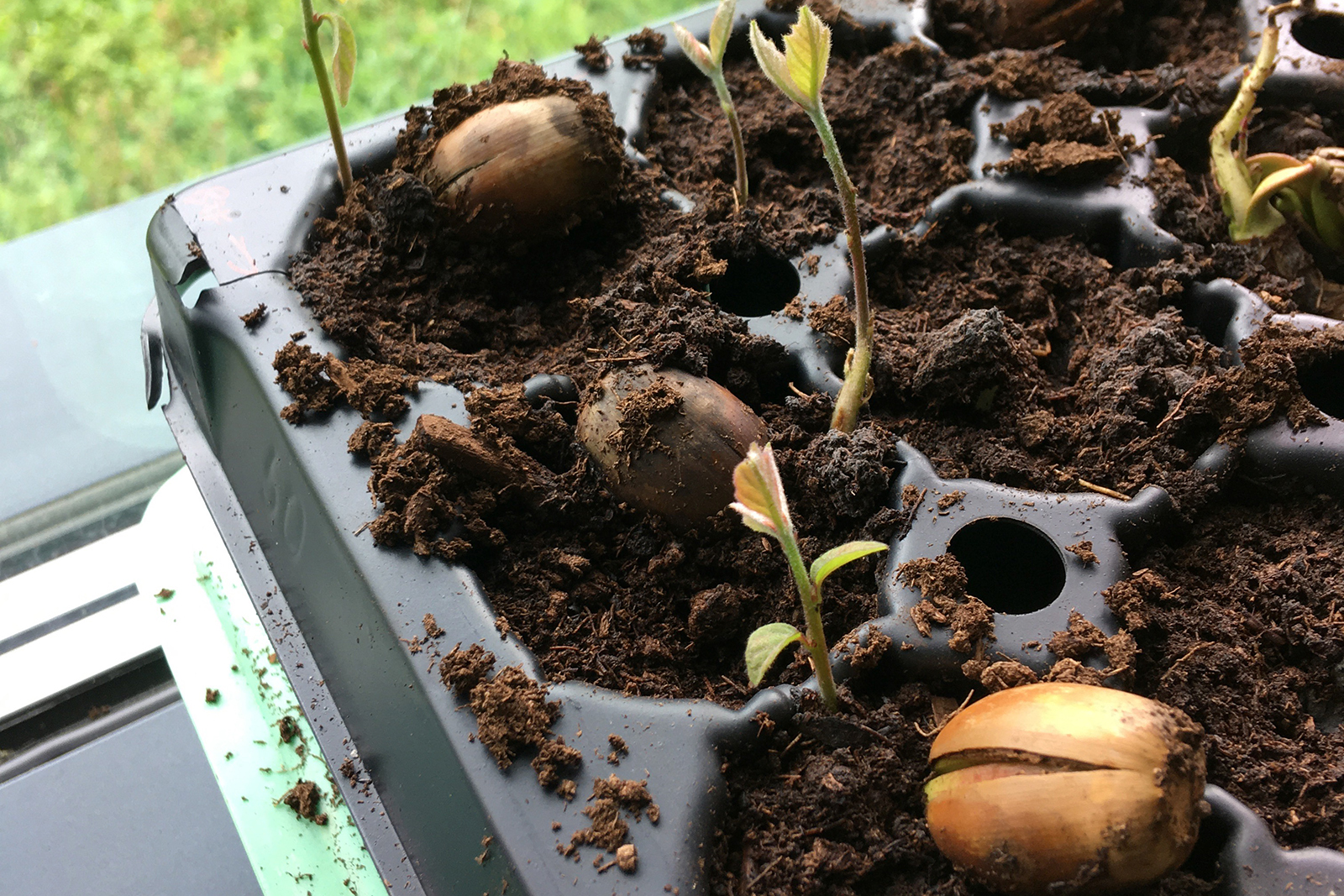

Kristen Haynes, assistant director of Rice Creek Field Station at SUNY Oswego, once electric biked to work with a 20-pound box of acorns on her back as part of her job. That package arrived courtesy of volunteers for a New York forest restoration project who collected the acorns after they fell from the white oak trees that decorate the National Mall. After the acorns made the 412-mile trip from Washington to Oswego, New York, their final destination would hopefully be an upstate backyard or public space, thanks to the station’s Canal Forest Restoration Project.
“It was pretty amazing to just kind of pick the acorn boxes up,” Haynes says. “It was kind of funny at times. But it was wonderful.”
Part restoration project and part educational outreach initiative, the project works to increase the population and public knowledge of native trees forested to build and support the Erie Canal operations. Because their wood is water resistant, white oaks were cut down to make boats. In 1849 alone, the canal transported more than 665,000 tons of forest products. Beyond boats, construction of the 363 mile-long canal also involved deforestation, drained swamps, and rerouted creeks.
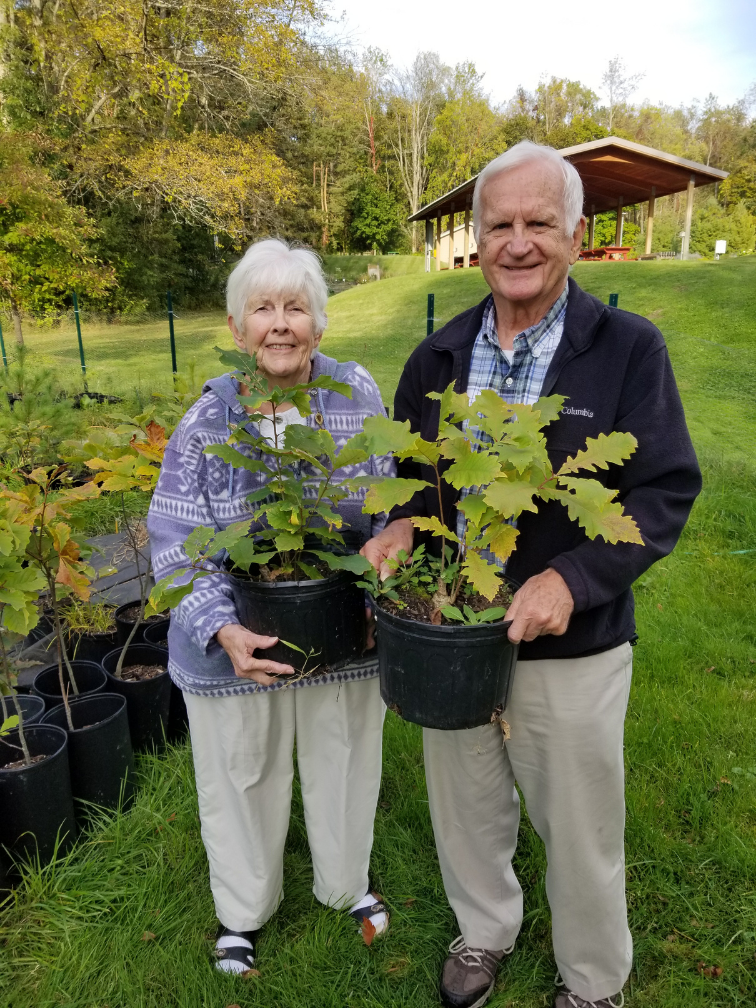
George and Jane Pauk made it their personal mission to discover why white oaks and pines were missing along the Erie Canal and later created the Canal Forest Restoration Project to address that absence. Courtesy of Kristen Haynes.
“It's been really inspiring to see the dedication a lot of people have,” Haynes says. Restoration project staff, volunteers, and partners work with the goal of not only illuminating and countering the effects of past canal activity but also establishing a future generation of trees to support and benefit the region. Together, they collect acorns, plant and grow seeds, and distribute trees to the public. “This was founded by a couple of members of the public who really just had the belief and the courage to say, ‘We can make a difference,’” Hayes says. “‘Just us two.’”
Those “two” are retired physician George Pauk and his wife Jane Pauk. When traveling along the canal, they realized that mature white oak and pine trees were missing from the surrounding forests. They decided to start growing white oaks that would be passed along to others, collecting the acorns and growing them in their daughter’s Washington, D.C. home. Their granddaughter even helped to water the plants, and their children are the ones who sent Haynes acorns from Washington, D.C..
“Little trees are beautiful. They are. And it is so rewarding to grow them,” Pauk says. “When we give them away, people are turned on to the ideas, and so it's teaching and giving away something good.”
In their first year distributing trees, the Pauks worked with the Lake Champlain Maritime Museum’s 2017 Stem to Stern project. Matt Harrison, now the museum’s education programs coordinator, was an intern tasked with keeping the Stem to Stern trees alive. He remembers holding and watering trees in an unused museum exhibit during the winter. Once aboard the Lois McClure, a replica boat that traveled the entire length of the canal, Harrison helped hand out the trees and educate the public about the canal’s environmental history. Stem to Stern reminded Harrison of the interconnected nature of human activity, economic activity, and natural systems — with the canal itself being a symbol of interconnectedness.
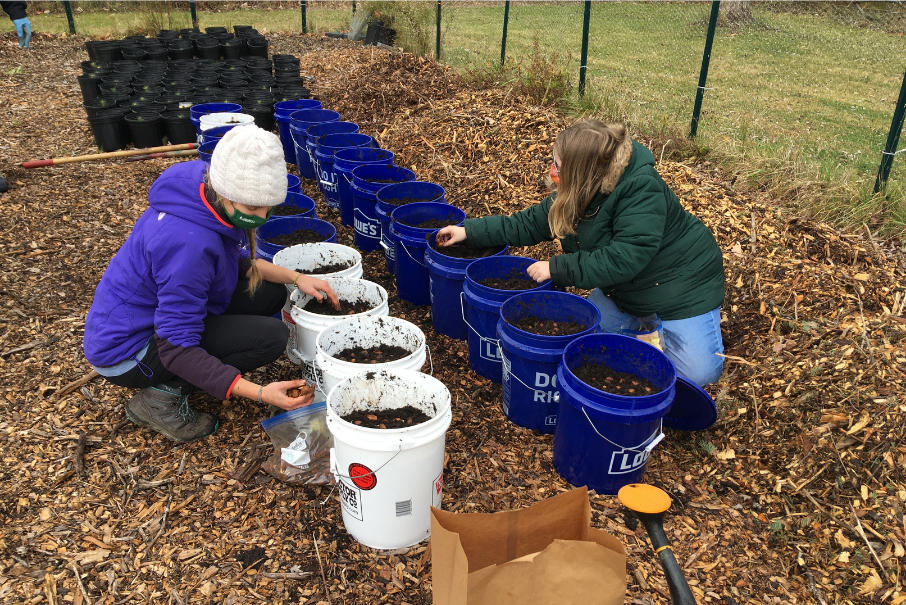
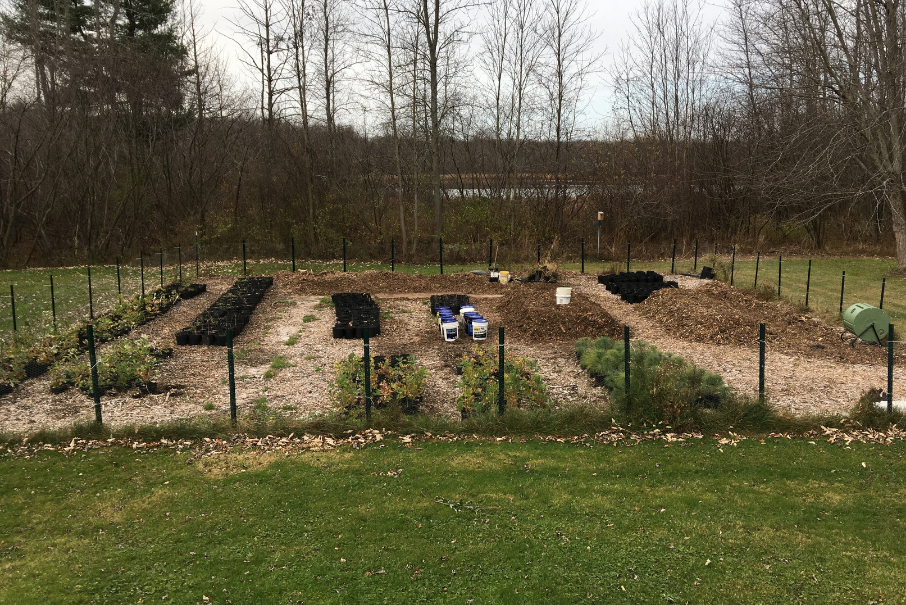
Piper Warren, pictured (left) with former intern Delaney Krasner, found that taking care of the trees was one of her favorite parts of the project—but she also enjoyed talking with people during tree giveaways. To keep seeds safe during the winter, the project buries them in soil in five gallon buckets and tops them with mulch. Courtesy of Kristen Haynes.
“The canal story is so multifaceted,” says David Brooks, education director at the Schoharie Crossing State Heritage Site. “If you're talking about trees being either cut down or planted along the canal and the environmental part — there's the sociological, the economic, there's the political, there's just the day-to-day operations. And then you can break that down into a million and one stories.” Brooks thinks it’s important to understand how the people who built the Erie Canal viewed the environment. That’s why he starts his presentations on the canal and nature with Genesis 1:28, which describes nature as something to be used. Construction started on the canal in 1817, but it wasn’t until the 1880s that New York state made a concerted effort to protect and conserve the canal environment.
More than 100 years later, the restoration project’s own story at Rice Creek came into being when Kamal Mohamed, the field station’s director, discovered that National Grid would have to cut down dozens of white ashes on the station's property that had died from emerald ash borer, an invasive insect that burrows in the tree’s bark and is responsible for the destruction of tens of millions of ash trees in 30 states. When asked about the restoration project and what it offers him, Mohamed’s answer was simple but passionate: satisfaction. Looking toward the future, he says he hopes to expand the number of trees it offers and the number of student interns it hires.
Native trees are particularly important because they act as a source of food and shelter for native wildlife.
This past spring, Piper Warren served as the project’s sole intern. Warren remembers driving to a big city compost pile in a previous semester with Haynes and another intern to get compost for the trees. It took them a while to fill the 70 buckets they brought with them, but the work reinforced the importance of the work. Recently graduated from SUNY-Oswego, Warren is no longer an intern, but she plans to continue volunteering with the project. She says that working with the project gave her management skills and helped direct her career goals. “There is a lot of work involved. It definitely takes a lot of volunteers and extra help,” Warren says. “It is a true team effort.”
South Seneca teacher Steve Frost became a part of the team in 2019. A project partner, Frost grows his own white oak seedlings to give away. “I guess we can say it's more than a hobby,” he says. “It's a passion.” Trees are a family affair for Frost. His father was always digging up saplings and bringing them home. Frost is also a deer hunter, and he chose white oaks because their acorns are tastier to deer than other oak varieties. One of his growing secrets is using a compost made from leftovers he takes from his school’s cafeteria, such as pizza, mashed potatoes, and bean dip. And, at various points in the year, seeds and saplings take over his basement, garage, and backyard.
That’s one common theme among all involved with the project: they love trees. Both Haynes and Mohamed are plant ecologists with backgrounds in cultivating native plants, making the field station a “happy landing place for the project,” Haynes says. Even with a small lot, she and her husband are growing seven trees. Picking a favorite is a difficult task for her, as they’re her “babies,” and “it feels funny picking one over the other.” One contender is the Tupelo tree, a species native to the area’s wetlands, that the restoration project team is considering adding to its roster.
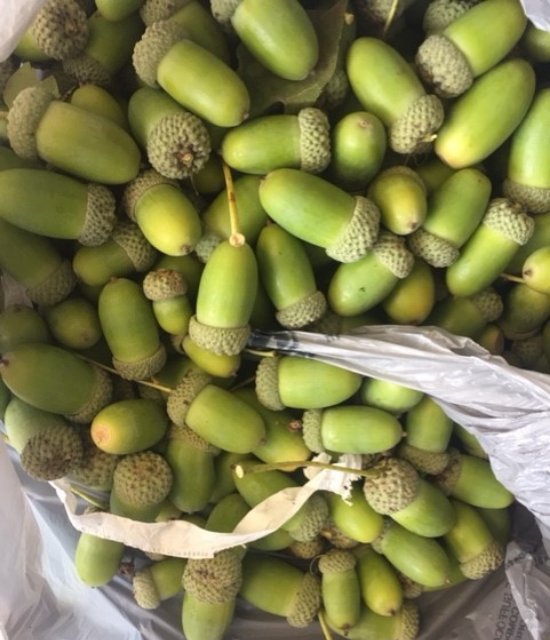
Project partner Steve Frost works all summer collecting white oak acorns to grow in his own backyard. Courtesy of Steve Frost.
Haynes also wants to expand the reach of the project along the Erie Canal corridor. Covid-19 impacted the project’s ability to connect with people across the state, forcing them to adapt their public outreach efforts. They established contact-free pickup, developed online materials, and replaced a giveaway event with an Arbor Day web conference that attracted about 500 people. Those involved with the project tried to adapt as best as they could, realizing that while the year wouldn’t be perfect, they would keep trying, Haynes says.
In previous years, the project visited festivals and manned tables, teaching people the significance of planting native species. The project wants people to know that, in addition to providing benefits for people and the climate, native trees are particularly important because they act as a source of food and shelter for native wildlife. One of the most rewarding parts of the work for Haynes is showing people that they can grow trees from seeds with just a few small steps. “I think what's so really, really great for me,” she says, “is to get to share some of this knowledge about growing and raising trees with people who didn't realize they had the ability to do that before.”

Our pursuit of outdoor joy is remiss without the acknowledgement of the occupation of unceded Indigenous land. We are students and journalists working, writing, and living on the land of the Haudenosaunee Confederacy, comprising the Six Nations made up of the Mohawk, Onondaga, Oneida, Cayuga, Seneca, and Tuscarora nations. However, acknowledgement is not enough. Read More.